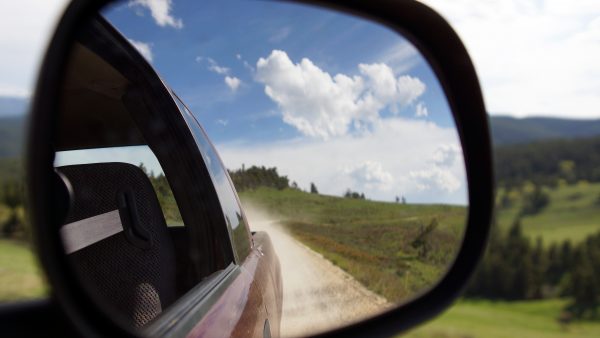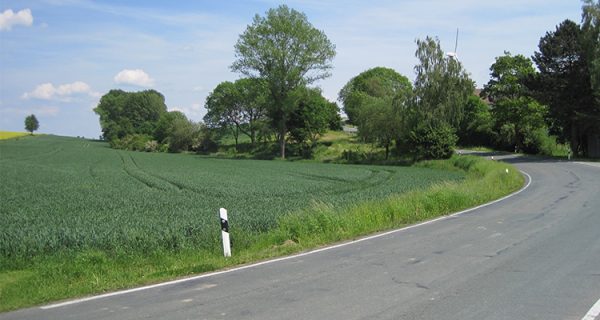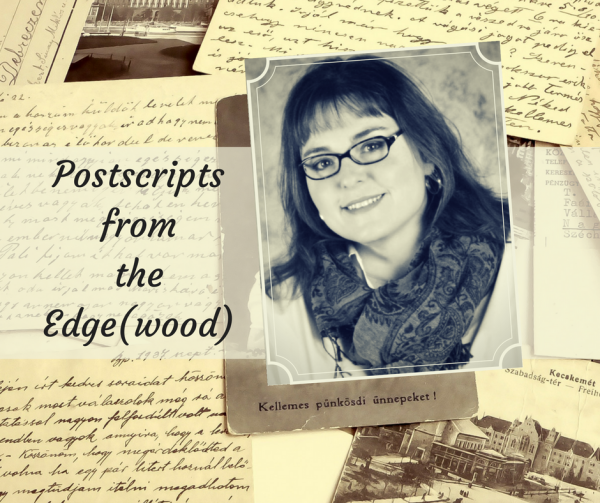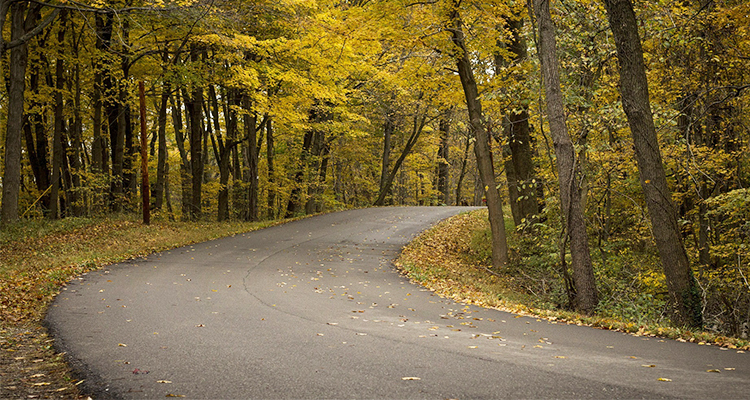Once cars became more affordable in the 1920s and ‘30s, families began to enjoy the ritual of the Sunday drive. For some people, Sunday drives meant leaving the smoke and noise of the city behind for bucolic rolling countrysides. For others, Sunday drives took them into the city for people watching and window shopping. For my family, our Sunday drives in the 1970s and ‘80s were adventures piloted by my father who generally kept our route to himself as a way of making it seem more like a quest.
Back then, my dad drove massive sedans, like Royal Monacos and Ford LTDs. As a child, the family cars always seemed to stretch for miles on the outside, but once inside, crammed in the back seat between my brother and grandmother, I felt like there was never enough room.
We didn’t have much money back then, so our vacations usually consisted of trips to Blackwater Falls, visiting family in Cleveland or spending the day at Kennywood Park. Our Sunday drives in many ways were more significant than any far-off vacation might have been because it was during those long, meandering drives that I got to know the Northern Panhandle in intimate ways.
 The memories flood my mind when I think about those journeys with my mom in the passenger seat and my dad behind the wheel. The seasons would dictate our travels. In the summer we would head out to the ridges and stop to pick blackberries or crab apples along the road. What we didn’t eat on the ride home, my grandmother and I used for canning or making cobblers. Is there anything in life sweeter than a deep-dish blackberry cobbler dusted with sugar? We made apple bread, too, filling the entire house with the smell of cinnamon and cloves.
The memories flood my mind when I think about those journeys with my mom in the passenger seat and my dad behind the wheel. The seasons would dictate our travels. In the summer we would head out to the ridges and stop to pick blackberries or crab apples along the road. What we didn’t eat on the ride home, my grandmother and I used for canning or making cobblers. Is there anything in life sweeter than a deep-dish blackberry cobbler dusted with sugar? We made apple bread, too, filling the entire house with the smell of cinnamon and cloves.
In the fall, we would go to the Big Woods in rural Marshall County and gather hickory nuts and walnuts in paper bags. Horses grazed in that forest, and one November my uncle Mike, who decided to come along, was bitten by one of them after it took his bag of hickories and shook them all over the leaf-carpeted ground. We would take the nuts home, and Dad would run over them with the car until the hulls slid off. My brother and I would pick the still-wet nuts out of the gravel and put them in a box for drying. Our hands would be stained brown when we went back to school the next day. We would use the nuts for snacks all winter and freeze them for recipes, like Christmas fudge and nut rolls.
In the winter, we would stick with the city streets to look at Christmas lights in the early dusk. Their lights would flicker outside the car windows as my dad slowed so that we could all take in extensive displays that took our neighbors hours to hang. It was during one of these Christmas lights tours that I remember being stunned by the homes along National Road. They seemed like mansions to a little girl from the trailer park. I realized one day last year that I now live in that neighborhood, and I spend hours putting up lights and hang wreaths each holiday season. Maybe a little girl will drive by and tilt her head back in her seat to fully take in the strands of blinking lights that festoon my eaves.
In the spring, we would roll down all the windows and explore the side roads, marveling at new green growth and chittery birdsong. It was during those April-May drives that we felt the warming air push away the winter staleness. We would often stop at my dad’s friend’s house far out on a long back road to borrow an empty peanut butter jar to fill with spring water. It was the best water any of us ever tasted, and my brother and I loved the novelty of catching water pouring out of the hillside and into the empty Jif jar.
 It was on these trips that I learned about the bumpy contours of Sally’s Backbone, that railroad engineers would sound their horns if you pumped your arm as they rumbled along by the river in New Martinsville, that Rosby’s Rock was the site where the last spike was driven for the B&O, that the Narrows was the scene of many fatal accidents, including my aunt’s first husband. It was during these drives that my grandmother would tell stories of her childhood growing up in Moundsville and of the many pranks played by my dad and his boyhood friends. Sometimes my mom would join in, too, pointing to the Gosney Farm where she lived with her family. “It was haunted,” she would say. “I had the hardest time falling asleep in that old place.”
It was on these trips that I learned about the bumpy contours of Sally’s Backbone, that railroad engineers would sound their horns if you pumped your arm as they rumbled along by the river in New Martinsville, that Rosby’s Rock was the site where the last spike was driven for the B&O, that the Narrows was the scene of many fatal accidents, including my aunt’s first husband. It was during these drives that my grandmother would tell stories of her childhood growing up in Moundsville and of the many pranks played by my dad and his boyhood friends. Sometimes my mom would join in, too, pointing to the Gosney Farm where she lived with her family. “It was haunted,” she would say. “I had the hardest time falling asleep in that old place.”
These Sunday drives became the fabric from which I was cut. I learned to love the outdoors. I learned to love the placid pace of doing nothing and going nowhere. And I learned to become a storyteller. Today, I have a hard time convincing my 7-year-old son to go for a drive. He finds staring out the window and listening — again — to my family stories to be monotonous, but on the rare occasion I catch him in the mood, we pile in the car and head to points unknown, ending up somewhere that has a story of its own that I eagerly tell.
I cannot recreate these nearly idyllic childhood moments for my son, but I can give him what those Sunday drives gave me: a sense that the world was not just a cramped trailer and that for four or five hours once a week my parents weren’t fighting and my grandmother wasn’t grieving my grandfather. In the backseat of my father’s big cars, I found peace in the dapple of sunshine on my face and the promise of finding treasure at some point along the way — even if that treasure was simply the bounty of togetherness.
• Christina Fisanick, Ph.D., is an associate professor of English at California University of Pennsylvania, where she teaches expository writing, creative non-fiction and digital storytelling. She is the author of more than 30 books, including her most recent memoir, “The Optimistic Food Addict: Recovering from Binge Eating Disorder.” She has been a Weelunk contributing writer since 2015. Christina is a 1996 graduate of West Liberty University and a member of Ohio Valley Writers. She lives in Wheeling with her family.



